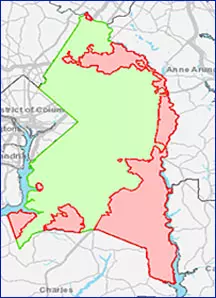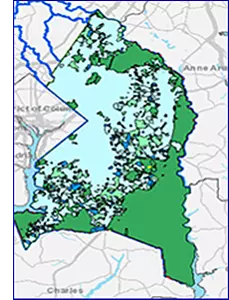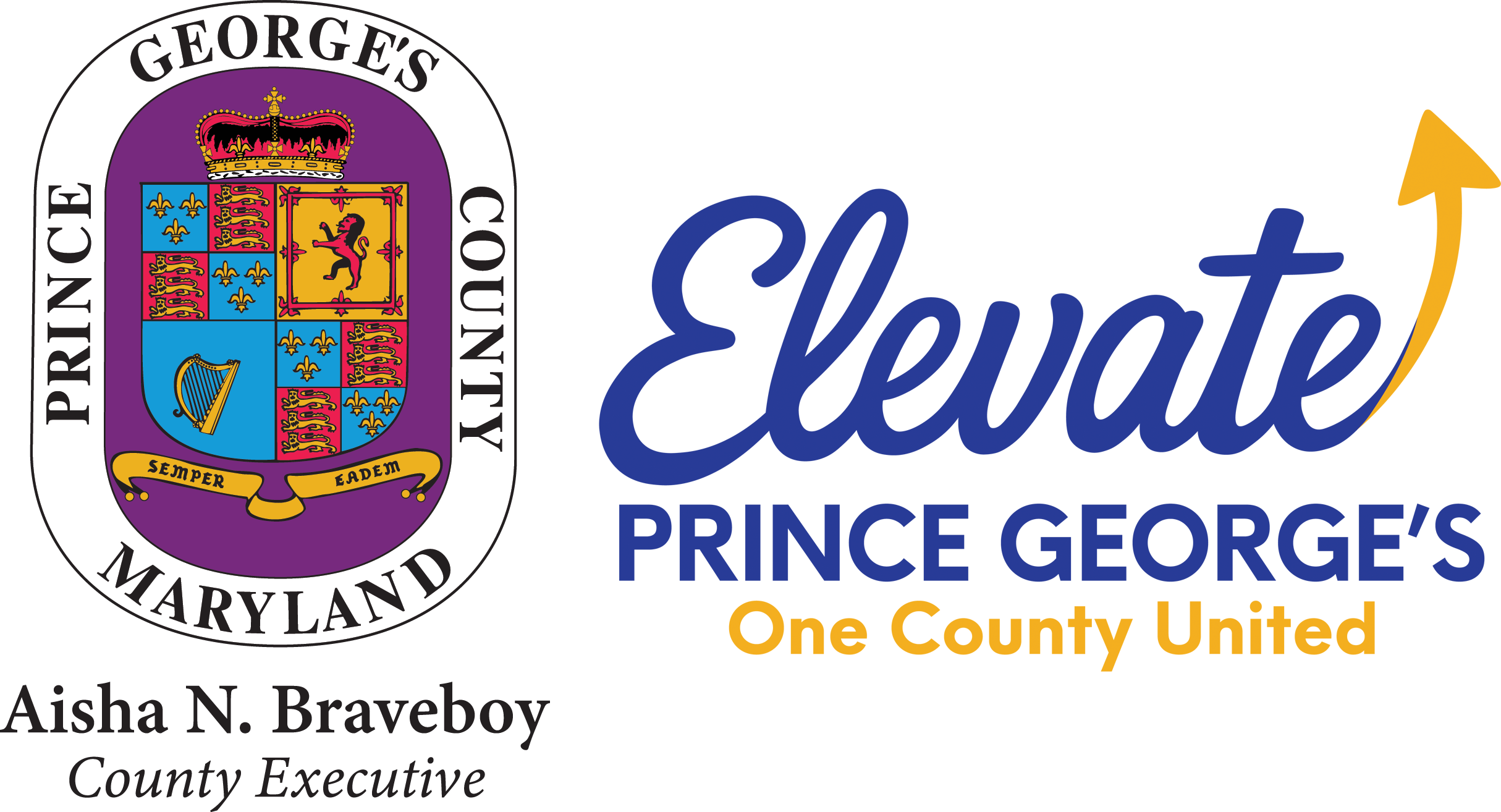
Water and Sewer Planning
Water and Sewer Planning Review Unit — Overview and Background
The Department of Permitting, Inspections and Enforcement (DPIE) administers the Water and Sewer Planning program. Refer to the Water and Sewer Plan (latest edition), for detailed information.

Water and Sewer Envelope
Within the County, the General Plan defines a water and sewer envelope (red line on the enclosed map). Areas inside the envelope (green) are planned for public water and sewer service. Areas outside the envelope (pink) are planned for well and septic. In general, it is not feasible to construct a project on well and septic inside the envelope nor feasible to construct a project on public water/sewer outside the envelope. Visit PGAtlas.com to find your property on this map. Turn on the Sewer Envelope layer.
Water and Sewer Categories

The DPIE Site/Road Plan Review Division manages amendments to the Water and Sewer Plan. Water and sewer categories for all properties are documented on GIS maps. Visit PGAtlas.com, and the category provides insight to provision of public water and sewer. Amendments to these categories are interrelated with the development review process, and the ultimate servicing of the property. These categories represent the stages in the development review process for systematically obtaining approval for water and sewer service.
The categories are defined by color scheme on the County’s Water and Sewer Category maps:
- Category 6 — Individual Well/Septic System (no public water and sewer planned) — Dark Green
- Category 5 — Future Community System (public system is planned but is developer-dependent for main lines construction) — Light Green
- Category 4 — Community System Adequate for Development Planning (water and sewer lines are available and/or accessible for extending) — Dark Blue
- Category 3 — Community System (public lines are funded and built, and/or available for extension, connection) — Light Blue
Water and Sewer Planning Approvals: Know Which Projects Require Approvals
For a project located inside the water and sewer envelope to advance to permitting (public water and sewer), a water and sewer category of 3 is required. The Washington Suburban Sanitary Commission (WSSC) permits are required to construct water and sewer lines. For a project located outside the water and sewer envelope to advance to permitting (well and septic), a water and sewer category of 6 is required, as well as DPIE well and septic permits.
Water and Sewer Category Amendments (Legislative) — Step-by-Step
If a property requires amending of the water and sewer category from Category 6 or 5 to Category 4, this requires the legislative process. Category changes from 4 to 3 require the administrative process.
Legislative Amendment applications follow the legislative schedule set by the County Council. DPIE has scheduled these applications into “cycles” that occur quarterly: Filing deadlines occur on March 1st, June 1st, September 1st, and December 1st. Legislative Amendment cycles are a minimum of three months and may be longer, depending on the County Council’s calendar and other factors.
Administrative Amendments may be filed by the 1st of any month, except August and December (the recess months). Administrative Amendment cycles are approximately 45 days.
- Step 1: For all Water and Sewer Plan amendments, file DPIE Form 2.01.
- Step 2: Legislative and Administrative amendments are reviewed by the technical agencies: DPIE, WSSC, M–NCPPC and the HEALTH Department. After technical comments are provided, DPIE prepares and transmits a staff report to the County Executive. The County Executive then advances a recommendation for the applications to the County Council.
- Step 3: Legislative Amendments require Public Hearings. The Clerk of the County Council schedules the public hearings to introduce the legislation as a Council Resolution and for public comment on the Council Resolution applications. Additionally, the Planning Board of The Maryland–National Capital Park and Planning Commission (M–NCPPC) will hold a public hearing on applications in a County legislative water and sewer plan cycle. Notifications are typically provided to the applicants and correspondents of records, if signed up to receive these notices.
- Administrative Amendments do not require a public hearing; however, a public hearing may be requested by the County Executive or County Council. This is a rare occurrence but possible.
- Step 4: The County Council then holds a separate committee meeting on the respective applications in each legislative cycle. The Transportation, Infrastructure, Energy and Environment (TIEE) Committee proposes recommendations to the full County Council. This meeting entails discussions with reviewing agency staff (DPIE, WSSC, M–NCPPC, PGCHD) and occurs after the Public Hearing of the given cycle.
- Step 5: The Legislative Water and Sewer Cycle is adopted at a final public hearing by the full County Council.
- Step 6: Water and Sewer maps are amended once the County Executive submits concurring comments on the Council Resolution.
Final Subdivision Plats — DPIE review Step-by-Step — Public Water and Sewer Systems Only
- Step 1: For projects proposed on public water and sewer, the applicant must submit final subdivision plats to DPIE and include Form 2.02 with fees and appropriate documentation. Final subdivision plats are filed after the property has secured preliminary plan of subdivision approval, w/s category 3, WSSC approval of the Letter of Findings and Hydraulic Planning Analysis (also known as authorization approval). WSSC authorization approval is not required if existing public water and sewer lines abut the property.
or
Step 1 Alternate: For projects proposed for well and septic, these final subdivision plats must be submitted to the Prince George’s County Health Department, in lieu of DPIE. - Step 2: DPIE reviews and signs the final subdivision plat mylar, upon confirming all submittal requirements.
- Final: After DPIE signature, final subdivision plats are processed through M–NCPPC Planning Board and recorded in Land Records.
Dependencies (Water and Sewer versus Other Agency Approvals)
The following flow chart summarizes dependencies between various agency processes for projects planned to pursue public water and sewer. Approvals from each stage must be completed in order to start the subsequent stage.

The following flow chart summarizes dependencies between various agency processes for projects planned to pursue public water and sewer. Approvals from each stage must be completed in order to start the subsequent stage.
| Stage 1: | Stage 2: | Stage 3: | Stage 4: |
|
|
|
|
|
|
|
|
|
|
|
|
|
Other Processes
Permits for construction of public and private water and sewer systems are issued by the Washington Suburban Sanitary Commission (WSSC). Permits for construction of new well and septic systems are issued by DPIE.
Residential Waivers for Connections to Public Water and Sewer
Waivers from the water and sewer plan are not common and are submitted to and reviewed by DPIE, according to the Water and Sewer Plan (latest edition). Please contact DPIE for further information. Some waivers require approval through the legislative process.
Water and Sewer Planning — Codes, Standards, Guidelines, Training Presentations
- 2018 Water & Sewer Plan (or latest edition)
- Bulletin 2024-02 (PDF) — This bulletin announces the Preemption and Deferral of the September 2024 Legislative Cycle of Amendments to the 2018 Water and Sewer Plan.
- Bulletin 2022-01 (PDF) — This bulletin announces the Revised Scheduling of the September 2022 Legislative Cycle of Amendments to the 2018 Water & Sewer Plan.
- Bulletin 2020-01, Rev 5-2020 (PDF) — This bulletin announces the Revised Schedule for Cycles of Amendments to the 2018 Water & Sewer Plan Bulletin for consistency with the County’s Legislative Year. The new Legislative Cycle months for water and sewer category changes are March, June, September, and December.
- Bulletin 2020-01 (PDF) — This bulletin announces the Revised Scheduling of Legislative Cycle of Amendments to the 2018 Water & Sewer Plan Bulletin.
- Bulletin 2019-01 (PDF) — This bulletin announces the 2018 Water & Sewer Plan — Adopted.
- Training — Third-Thursday Community Information Session: Understanding the Residential Infill Permit PowerPoint.
Water and Sewer Planning — Forms, Checklists
- Application for Water and Sewer Plan Amendment (Chapter 6)
- Final Plat Approval Application
- Waiver Application for Interim Well and Septic
- Waiver Application for Connection to Public Water and Sewer
